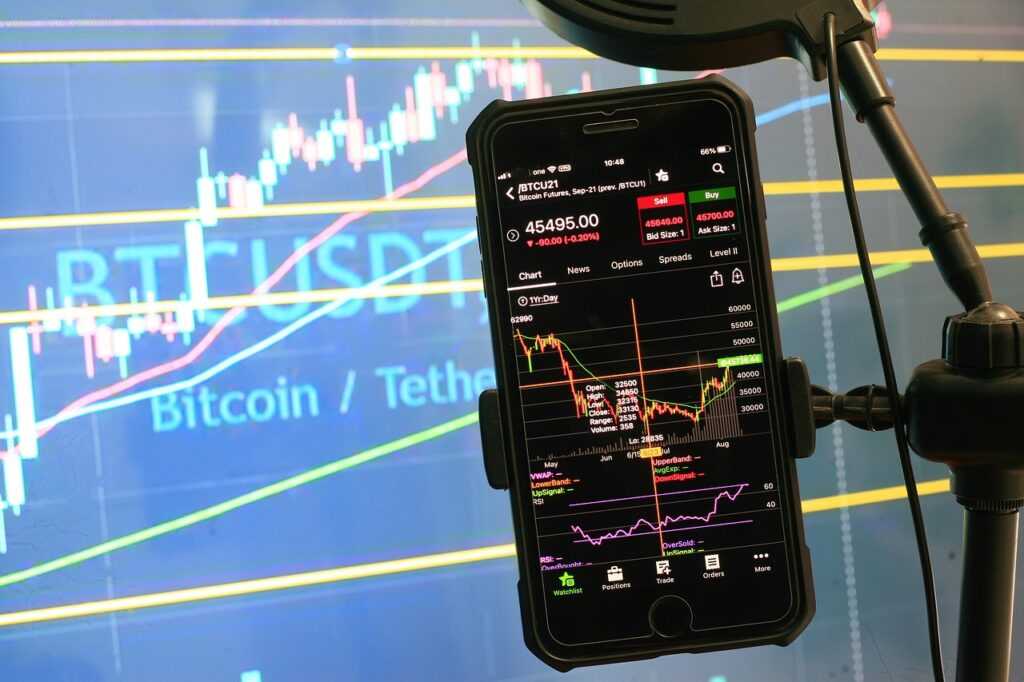Navigating the world of cryptocurrency investments can be both thrilling and daunting. When it comes to maximizing returns, two primary strategies stand out: day trading and HODLing. As an avid investor in the crypto space, I’ve often pondered which approach holds the key to success. Day trading, with its quick buy-sell cycles, offers the allure of instant profits, while HODLing advocates preach the benefits of long-term asset accumulation. In this article, I delve into the nuances of these strategies to uncover which one reigns supreme in the volatile realm of digital assets. With insights drawn from personal experience and industry expertise, I aim to shed light on the age-old debate of day trading versus HODLing, helping you make informed decisions in your investment journey.
Understanding Day Trading
Day trading involves buying and selling financial instruments within the same trading day. It’s a high-risk, high-reward strategy that requires quick decision-making and a deep understanding of market movements.
What Is Day Trading?
Day trading is a short-term trading strategy where traders aim to capitalize on small price movements in highly liquid assets. It involves leveraging margin and technical analysis to make multiple trades throughout the day.
Pros of Day Trading
- Potential for quick profits: Day traders can profit from intraday price fluctuations, allowing them to make money within a short timeframe.
- Flexibility: Day traders have the flexibility to adapt to changing market conditions and news events.
- No overnight risk: Unlike swing or position traders, day traders do not hold positions overnight, reducing the risk of overnight market movements impacting their trades.
- High volatility: Day trading is inherently volatile, and market fluctuations can lead to significant losses.
- Time commitment: Successful day trading requires constant monitoring of the markets, which can be time-consuming and stressful.
- Emotional stress: The fast-paced nature of day trading can lead to emotional decision-making, which may result in impulsive trades and potential losses.
Exploring HODLing
HODLing, a term originating from a misspelled word “hold,” signifies the strategy of holding onto your cryptocurrency assets for an extended period rather than engaging in frequent buying and selling. It embodies a long-term investment approach based on the belief in the potential growth and value appreciation of digital assets over time.
What Is HODLing?
HODLing involves resisting the urge to sell your cryptocurrency holdings even during market fluctuations. Instead, investors trust in the overall upward trajectory of the market and the potential of their chosen digital assets to increase in value significantly over the long haul. This strategy requires patience, conviction, and a strong stomach to weather the volatility inherent in the crypto space.
Pros of HODLing
- Reduced Stress: By adopting the HODLing strategy, individuals can avoid the anxiety and pressure associated with constantly monitoring price movements and making split-second trading decisions.
- Long-Term Growth Potential: HODLing is favored by many investors due to its potential for substantial returns over time, leveraging the historical trend of overall market growth in the crypto sphere.
- Simplicity and Convenience: HODLing is a straightforward strategy that does not require active trading, making it suitable for those who prefer a hands-off approach to investing in cryptocurrencies.
- Lack of Immediate Gains: Unlike day trading, where profits can be realized quickly, the HODLing strategy necessitates waiting for an extended period to see significant returns on your investment.
- Exposure to Market Volatility: HODLers are subjected to the inherent volatility of the cryptocurrency market, which can result in substantial price fluctuations affecting the overall value of their holdings.
- Potential Missed Opportunities: By holding onto assets long-term, investors may miss out on short-term profit-taking opportunities that arise from sudden price surges or market developments.
Key Differences Between Day Trading and HODLing
When comparing day trading and HODLing, it’s essential to consider factors like risk management, potential returns, and time investment to determine the best strategy for your investment goals. Let’s dive into the key differences between these two approaches.
Risk Management
In day trading, I constantly monitor market movements throughout the day, making quick buy and sell decisions to capitalize on short-term price fluctuations. This active trading style exposes me to high levels of risk due to the market’s unpredictable nature. Emotions can also play a significant role, leading to impulsive decisions that may result in losses.
On the other hand, HODLing involves a long-term perspective, where I choose to hold onto my assets regardless of short-term price movements. This strategy reduces my exposure to daily market volatility and helps me avoid making hasty decisions based on emotions. While market fluctuations can still impact long-term gains, the overall risk is typically lower compared to day trading.
Potential Returns
Day trading offers the potential for quick profits by capitalizing on small price movements throughout the day. However, these gains are not guaranteed, and losses can occur just as rapidly. The high volatility of the cryptocurrency market presents opportunities for substantial returns but also comes with significant risks that may not be suitable for all investors.
In contrast, HODLing focuses on long-term growth potential by allowing investments to mature over an extended period. While this approach may not yield immediate gains, it offers the opportunity to benefit from overall market growth over time. By holding onto assets for the long term, I can potentially maximize returns as the cryptocurrency market expands.
Time Investment

Day trading requires a significant time commitment as I need to actively monitor the market, analyze price charts, and execute trades throughout the day. The fast-paced nature of day trading means that I must be attentive to market movements to capitalize on short-term opportunities continually. This constant vigilance can be demanding and may not be suitable for all investors.
On the other hand, HODLing is a more passive strategy that requires less daily time investment. Once I have chosen my assets and decided to hold onto them for the long term, I can take a more hands-off approach and let my investments grow over time. While periodic portfolio reviews are still essential, the overall time commitment is less intensive compared to day trading.
By understanding the differences in risk management, potential returns, and time investment between day trading and HODLing, I can make informed decisions that align with my investment preferences and goals. Each strategy has its strengths and weaknesses, so it’s essential to consider these factors carefully before choosing the approach that works best for me.
Factors to Consider When Choosing a Trading Strategy
When deciding between day trading and HODLing, several essential factors play a crucial role in determining the best strategy for one’s investment approach.
Market Knowledge
As an investor, understanding the market dynamics is vital when choosing a trading strategy. Day trading requires in-depth knowledge of technical analysis, chart patterns, and market trends to make quick and informed decisions. On the other hand, HODLing focuses more on fundamental analysis and a long-term outlook on asset growth, requiring a solid understanding of the underlying technology and market fundamentals.
Investment Goals
Clarifying your investment goals is fundamental in selecting the right trading strategy. Day trading suits individuals seeking short-term gains through frequent buying and selling, aiming for quick profits based on market fluctuations. In contrast, HODLing aligns with investors looking for sustained growth over an extended period, capitalizing on long-term market trends and asset appreciation.
Risk Tolerance
One of the critical factors to consider when choosing a trading strategy is your risk tolerance level. Day trading involves higher risks due to the volatile nature of short-term price movements, requiring quick decision-making and the ability to handle market uncertainties. On the other hand, HODLing offers a more stable approach with lower daily market exposure, making it suitable for investors with a lower risk appetite and a preference for long-term asset accumulation.


